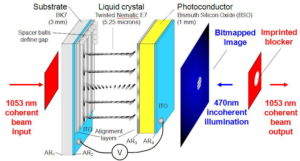Meadowlark Optics Has Pivotal Role in Fusion Research
The Beginning
Back in 1952, the first useful demonstration of nuclear fusion was carried out. It was for vastly different reasons than those celebrated most recently, although one might say that was when interest in atomic science for practical applications really blew up (pun intended.) Physicists have been seeking fusion as a viable energy source ever since, with no success. However, on December 13, 2022, a press conference confirmed the news that scientists at the National Ignition Facility (NIF) achieved net energy gain in a fusion reaction. Meadowlark Optics is humbled and ecstatic to report that one of its products had a key and unique role in this achievement.
How It Works
Fusion combines small atoms like hydrogen into bigger atoms like helium. Also called thermonuclear fusion, it is a process that releases energy but requires extremely high temperatures and pressures only seen in our solar system in the core of the sun, until now. It is this same activity the sun uses to create energy. NIF has been able to produce the needed pressures and temperatures using very powerful laser pulses. The system of 192 synchronized lasers uses large optics in each beam line of roughly a meter in diameter. If there is a dust speck or scratch on an optic, each laser beam is strong enough to destroy these precision optics, perhaps with a single laser pulse.

The Meadowlark Product
Meadowlark worked with NIF scientists to produce 48 optically-addressed spatial light modulators (SLMs) to pattern the laser beams to avoid high intensity on any optic defects. The method increases the energy the lasers can deliver to the fuel pellet severalfold. Without Meadowlark’s scientific contribution, the net energy gain could not be achieved, and this future source of abundant clean energy would not be possible using lasers. In 2012 Meadowlark won an R&D 100 Award for this important work with NIF. The award is granted to one of the top 100 technologically significant inventions of the year. There is a plaque in Meadowlark Optics’ state-of-the-art facility commemorating that achievement.
Meadowlark Optics salutes the fine and tireless work of NIF and looks forward to the possibilities on the horizon because of this breakthrough.
For more information on partnering with Meadowlark on special projects, contact [email protected]. For information on our outstanding catalog SLMs click here.



